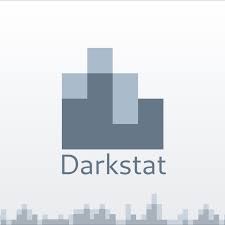Darkstat — Lightweight Traffic Monitoring from the Command Line
General Information
Darkstat is a compact network traffic analyzer that captures packets and turns them into simple statistics. It is often chosen when administrators need a quick way to see who is using bandwidth on a network segment without deploying a full monitoring platform. The program runs quietly in the background and provides a small web interface with graphs and traffic breakdowns. Its strength lies in being minimal, portable, and easy to set up on almost any Linux server.
How It Works
Once started, Darkstat listens on a network interface, gathers packet data, and summarizes it into flows. Instead of storing full captures, it records totals per host and per port, which keeps resource usage low. A built-in web server shows graphs of bandwidth over time, along with lists of top talkers and protocols. The interface is basic but effective — perfect for spotting which device suddenly starts consuming too much bandwidth.
Key Functions
| Function | Description |
| Traffic capture | Monitors packets directly from an interface. |
| Host statistics | Tracks bandwidth usage per IP address. |
| Protocol details | Breaks down traffic by port and protocol. |
| Built-in web UI | Lightweight interface with real-time graphs. |
| Low footprint | Consumes minimal CPU and memory. |
| Portability | Runs on most Unix-like systems with few dependencies. |
Installation Guide
On most Linux distributions Darkstat is available in standard repositories:
1. Install with package manager (`apt install darkstat` on Debian/Ubuntu, `yum install darkstat` on RHEL/CentOS).
2. Edit the configuration file or start it directly with command-line options, specifying the interface to monitor.
3. Launch the service, then open the built-in web interface (usually on port 667).
4. Adjust firewall rules if needed to allow access from trusted hosts only.
Where It’s Useful
Darkstat fits well in small networks, lab setups, or branch offices where a quick view of traffic is enough. Many admins use it as a first step when troubleshooting bandwidth complaints — it immediately shows which host is consuming resources. It is also practical for temporary monitoring when deploying a new link or testing application traffic.
Limitations
Darkstat is not meant for long-term trending or enterprise-wide monitoring. It lacks advanced alerting, correlation with logs, or deep protocol analysis. For complex environments, tools like Cacti or Zabbix are more appropriate, while Darkstat remains a lightweight option for quick visibility.
Comparison
| Tool | Platforms | Strengths | Typical Use |
| Darkstat | Linux/Unix | Very small footprint, quick setup, built-in web graphs | Short-term traffic monitoring, troubleshooting |
| Cacti | Linux (LAMP/LEMP) | Scalable graphing, SNMP-based polling | Long-term monitoring, capacity planning |
| ntopng | Multi-platform | Deep traffic analysis, rich web interface | Detailed flow analytics, enterprise networks |

